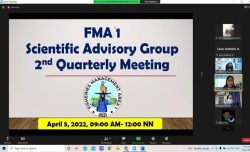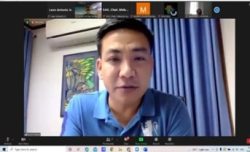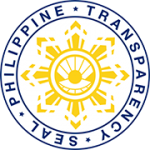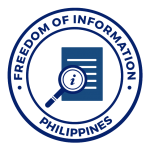 The Fisheries Administrative Order (FAO) No. 263, s. 2019 is supported by the Isabela State University in providing effective management mechanisms for key species in the Northern Pacific Seaboard of the Fisheries Management Area I (FMA I), Key Players and Scientific Advisory Group (SAG) of the Fisheries Management Area (FMA) Northern Pacific Seaboard Management Board convened on April 5, 2022, for its 2nd quarterly meeting to fortify commitment as stewards of fisheries resources along the Philippine Waters.
The Fisheries Administrative Order (FAO) No. 263, s. 2019 is supported by the Isabela State University in providing effective management mechanisms for key species in the Northern Pacific Seaboard of the Fisheries Management Area I (FMA I), Key Players and Scientific Advisory Group (SAG) of the Fisheries Management Area (FMA) Northern Pacific Seaboard Management Board convened on April 5, 2022, for its 2nd quarterly meeting to fortify commitment as stewards of fisheries resources along the Philippine Waters.
Hosted by the DA-BFAR 2, FMA 1 Lead Region, and was attended by the SAG sectoral representatives from different agencies including State University Representative, LGUs, and regional NSAP focal persons from regions 2, 3, 4A, 5, and CAR via Zoom platform.
Dr. Isagani P. Angeles, the ISU Center Director of the Cagayan Valley Freshwater Fisheries Center is a member of the FMA.
In the meeting, topics included the highlights of the FMA 1 profile, assessments of the top 20 dominant species in each of its three sub-FMAs, and the activities conducted by the NSAP in obtaining the performance indicators of the said species. Moreover, the future activities of the body also discussed the effective management mechanisms for key species in the Northern Pacific Seaboard of the FMA I that aim to ensure sustainable utilization of fishery resources and responsible fishing practices.
Dr. Angel B. Encarnacion, the regional director of BFAR 2 and the chair of the FMA I Management Board is present at the meeting. In his message, Dr. Encarnacion commended the sectoral representatives and NSAP regional focal person who make up the SAG, as well as its secretariat, for their efforts and active engagement in achieving the goals and plans of the FMA.
The new fisheries management framework to curb illegal, unreported, and unregulated fishing was introduced in 2019. The provisions of Republic Act (RA) 8550, as amended by R. A. No. 10654 also known as the Amended Fisheries Code of 2015 serve as the basis for the norms of process.
The Fisheries Administrative Order (FAO) 263 calls for the establishment of Fisheries Management Areas, a conservation measure that aims to provide a science-based, participatory, and transparent governance framework and mechanism towards the sustainable management (EAFM) and conservation of marine resources. Under the FMA mechanism, the Philippines’ seascapes are delineated into 12 areas with each co-managed by the country’s fisheries agency and a network of local governments.
The 12 FMAs were established after taking into account a stock’s boundary, range, and distribution, the structure of fisheries, as well as administrative divisions, using data from the National Stock Assessment Program, other scientific sources, and input from public consultations. Each FMA has its own management body, FMA I is hosted by BFAR RO2 co-led by LGU representatives, and composed of representatives from the key stakeholders within the FMA.
The FMA management body established the Reference Point (Biological indicators that are used to compare and show where the stocks are in terms of harvest, sizes, yield, catch rates, size at maturity, etc.) and Harvest Control Rules (Pre-agreed guidelines that determine how much fishing can take place, what size and where fish are caught/ fishing gears allowed or regulated based on indicators of the targeted stock’s status) for science-based management.
These management measures endorse/ recommend and lay down broad policies for the entire fisheries management to be implanted accordingly by the BFAR, LGUs, and DENR according to their mandates and jurisdictions.
The ecosystem approach provides a useful and efficient way to manage fisheries more effectively overall. Balancing environmental, human, and social well-being within enhanced governance frameworks, symbolizes a shift away from fisheries management that is focused on target species:
- EAFM is an integrated management approach across land, water, and natural resources that promotes both sustainable use and conservation of the systems that are already connected in the nature/environment;
- EAFM looks at the bigger picture. It recognizes that fish and fisheries are part of a broader ecosystem that includes where fish live as well as the people who benefit from catching, trading, and eating fish.
- EAFM recognizes the reality that fisheries depend on healthy ecosystems and that different components in an ecosystem, such as fish, habitats, fishers, and other users are all connected and can impact each other.
- EAFM strives to find a balance between improving the well-being of the people and building or maintaining a healthy environment so that the benefits derived from fishing are sustained.
- EAFM strives to increase the benefits derived from catching fish without destroying the environment on which fish depend.
- EAFM considers the broader ecological, social, and economic dimensions of sustainable development in fisheries and the interactions among ecosystem Examples include fish and fishing, post-harvest processing, habitats, pollution, and other users;
- EAFM provides a framework to proactively address the underlying issues in a fishery by taking a more thoughtful long-term perspective on planning and management.
- EAFM provides a fisheries-relevant framework to help you bring different management strategies/approaches/tools (e.g. co-management, coastal zone management, MPAs, etc) together in a clear, logical, and structured approach
- EAFM allows the threats to the long-term sustainability of the fishery to be viewed alongside shorter-term economic Trade-offs and compromise agreements can be reached on actions to reduce impacts and enhance compliance.
- EAFM recognizes that complex problems facing fisheries may require solutions outside the fishery
Utilizing an EAFM enables the identification of external elements and could pave the way for constructive discussion. Additionally, it aids in the identification of strategies for reducing adverse effects in many industries, such as labor and working conditions, vessel registration and licensing, interactions with tourism, improved sewage treatment, and zoning of dredging to avoid nursery grounds.




